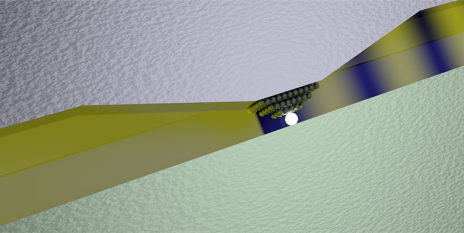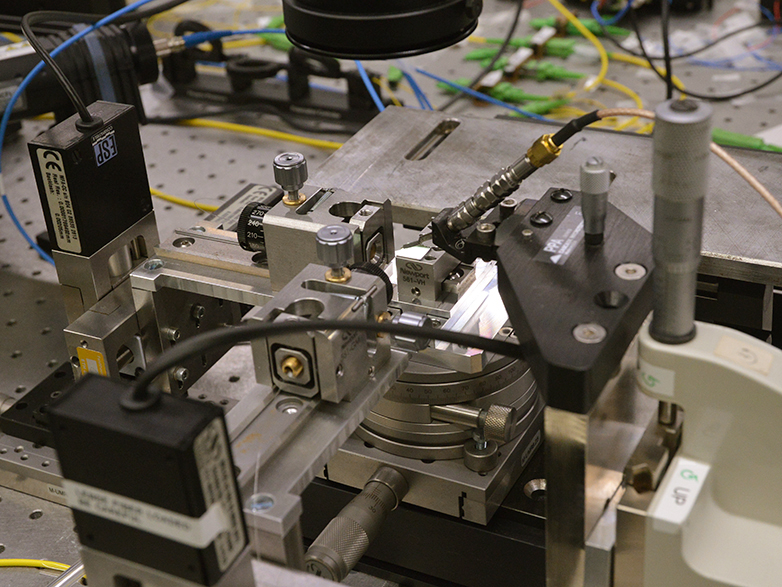The world’s smallest optical switch runs on a single atom
As communications expand and data rates soar, researchers from ETH Zurich in Switzerland set out to create more efficient network components. What they came up with was the world’s smallest integrated optical switch which turns on and off by applying a small voltage that relocates a single atom.

The modulator that the team developed is even smaller than the wavelength of light used in the system.
In telecommunications, optical signals are transmitted using laser light with a wavelength of 1.55 micrometres. Normally, an optical device can not be smaller than the wavelength it would be processing — until now.
“Until recently, even I thought it was impossible for us to undercut this limit,” said Jürg Leuthold, lead researcher.
How it works
Scientist Alexandros Emboras developed the world’s smallest optical switch with two tiny pads: one made of silver and the other of platinum, on top of an optical waveguide made of silicon. The two pads were arranged alongside each other at a distance of just a few nanometres, with a small bulge on the silver pad protruding into the gap and almost touching the platinum pad.

The device lets in light, which turns into a surface plasmon above the the metallic surface. A plasmon occurs when light transfers energy to electrons in the outermost atomic layer of the metal surface, causing the electrons to oscillate at the frequency of the incident light. These electron oscillations have a smaller diameter than the ray of light itself which allows them to enter the gap and pass through the bottleneck. On the other side of the gap, the electron oscillations can be converted back into optical signals.
When the voltage was applied to the silver pad, a single silver atom or, at most, a few silver atoms, moves toward the tip of the point and position themselves at the end of it. This creates a short circuit between the silver and platinum pads, so that electrical current flows between them. This closes the loophole for the plasmon; the switch flips and the state changes from “on” to “off” or vice versa. As soon as the voltage falls below a certain threshold again, a silver atom moves back. The gap opens, the plasmon flows, and the switch is “on” again. This process can be repeated millions of times.
As of now, the switch is not ready for production. According to the team, it is still a very slow-working device and only works for switching frequencies in the megahertz range or below. The researchers plan to continue working on it so that it can achieve frequencies in the gigahertz to terahertz range.
Story via ETH Zurich.

Comments are closed, but trackbacks and pingbacks are open.